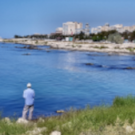An Engineer's Explanation Of Suvernabhumi Problems
-
Recently Browsing 0 members
- No registered users viewing this page.
-
Topics
-
-
Popular Contributors
-
-
Latest posts...
-
10
Thai Bread
Or any Asian country's strong point. Japan and China make decent attempts, but there is only one bread superpower, and that is Germany. -
80
-
276
UK Mohammed Fahir Amaaz & Muhammad Amaad on Trial over Manchester Airport Clash
Police officers in uniform. Their job description doesn't say, because you're weaker, keep to the back when in a confrontation and call a male officer to help. One of them is a trained firearms officer. Does her job description say, only pull your weapon after a male colleague says it's ok? And your totally wrong about my stance on transgenders in sports, not that it's relevant here. Now, stop clutching your pearls. It's not manly. -
8
Immediate Emergency Flight Home Experiences?
Much higher. I only book direct with the airline. If I were to book via booking site, I'd use Agoda. Good thinking to plan ahead. -
80
Trump promised 200 trade deals. He’s made 3
You’re so right — a loser arguing on AN 500 times a week definitely isn’t a life. No wonder you’re finally seeing it. -
80
Trump promised 200 trade deals. He’s made 3
Trump: August 1st is 100% firm / but not 100% firm
-
-
Popular in The Pub


.thumb.jpeg.d2d19a66404642fd9ff62d6262fd153e.jpeg)





.thumb.jpg.4fd22303fa94eb0a6ebf5a9cf7194eb4.jpg)

Recommended Posts
Create an account or sign in to comment
You need to be a member in order to leave a comment
Create an account
Sign up for a new account in our community. It's easy!
Register a new accountSign in
Already have an account? Sign in here.
Sign In Now